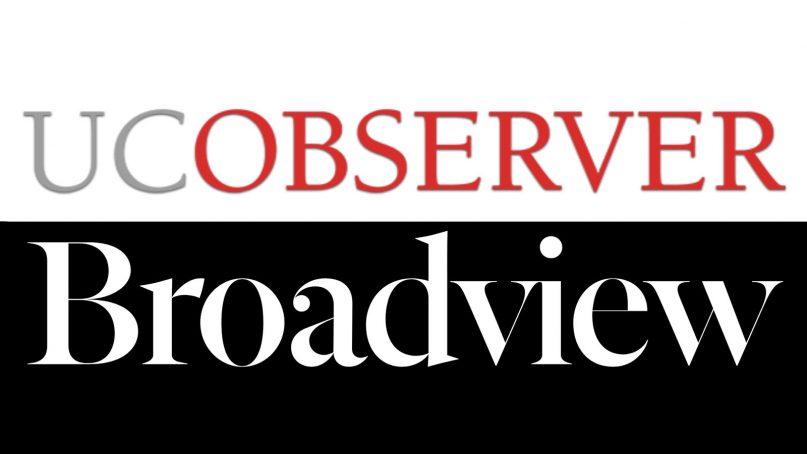(RNS) — When it comes to the future of faith-based journalism, the publication formerly known as United Church Observer is taking the broad view.
In fact, Broadview is the new name of the magazine, named after a subway stop near its editorial office here.
Founded in 1829, the Observer-turned-Broadview is the oldest continually published magazine in North America. It has served as the voice of the United Church since 1925, when four Protestant groups merged to form the mainline denomination.
For the past 50 years, both the denomination and publication have struggled. From more than 1 million members in the mid-1960s, the United Church has declined to just 400,000 in 2017.
As for the Observer, 50 years ago it had a circulation of over 300,000. By 2006, it was 60,000. Today it stands at 29,000.
Those numbers together prompted the new title. “We took a hard look at circulation,” said the magazine’s editor and publisher, Jocelyn Bell, 44. “We knew we couldn’t rely on the United Church audience from a numbers point of view.”
She’s quick to point out that the magazine isn’t declining because United Church members aren’t re-subscribing; they are fantastically loyal with a 90-percent renewal rate.
The problem is, there are fewer subscribers to renew. “People are dying,” said Bell of their aging readership.
By 2024, at the current rate, the publication would only have 12,000 subscribers, she noted — not enough to be sustainable or to continue paying its staff and writers well.
Market research showed, however, that there are many readers interested in a broad-based magazine that explored spirituality, social justice, the environment and equality — gender, racial and sexual.
One thing stood in the way: the name.
“It conveyed a members-only idea,” said Bell, who has worked for the left-leaning publication since 2006 and became editor in 2018. “We decided to make a significant change, not just a half-step.”
By changing the name, Bell said she wanted to target people “who are spiritual, who are interested in social justice and ethical living.”
At the same time, the new publication isn’t abandoning loyal church members, she said; it continues to publish United Church news.
Response to the first issue, which came out in April, has been positive, Bell said.
“People really like it, they like the new design,” she said, noting the magazine uses heavier paper and now is perfect bound, not saddle-stitched.
The goal over the next three years is to maintain circulation at the current level by attracting enough new subscribers while exploring new revenue streams from newsstand sales and online readership.
Bill Fledderus, president of the Canadian Church Press (CCP), an umbrella group, applauds Broadview’s openness to innovation, but notes, “This is a tough time for Canadian church periodicals.”
In 2003, Fledderus’ organization counted 81 periodicals as members. Today it has 47.
“It’s not an easy environment,” Bell agreed. Yet she believes there is a place for a quality print magazine, even among younger people who seem to mainly use mobile phones to get their information.
“Newspapers in print may be over, but millennials are really into magazines,” she added.
As for the future, she knows what they are doing “is a big risk. But doing nothing was a far greater risk.”





